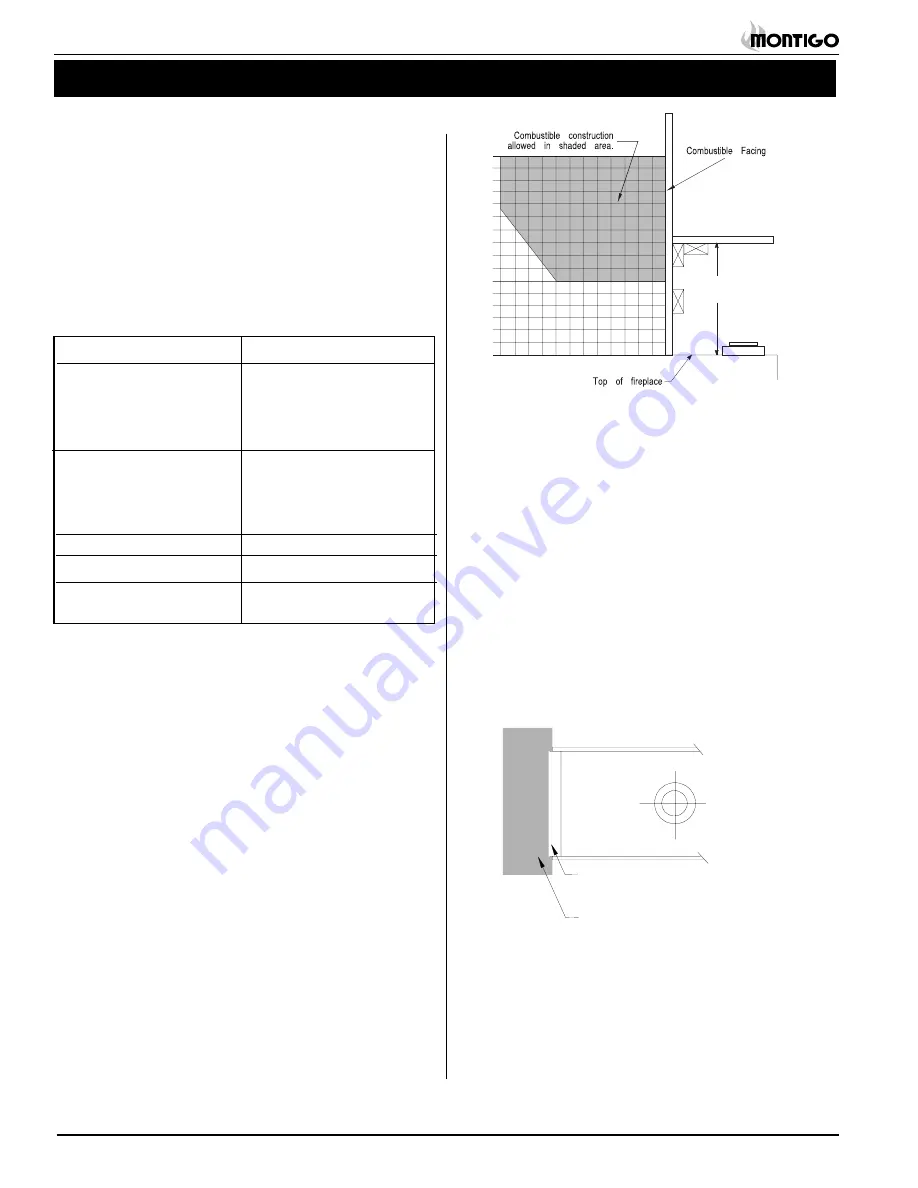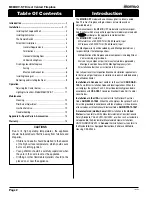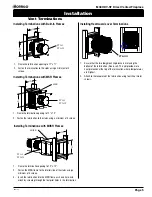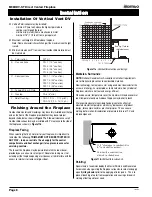
XG0128
Page 8
M38ODV-ST Direct Vented Fireplace
Finishing Around the Fireplace
Combustible mantels and mouldings may be safely installed over the top
and on the front of the fireplace provided that they do not project
beyond shaded area shown in
Figure 11a
. Side wall clearances are 0".
Combustible surrounds may be installed with 0" clearance to the side of
the fireplace as shown in
Figure 11b
.
Fireplace Facing
When selecting the finish material for your fireplace, it is important to
remember the following:
TRIMS MUST NOT BE OBSTRUCTED IN
ANY WAY - to do so restricts the air supply for the control
compartments and heat exchanger it also prevents access for
servicing controls.
The face of the fireplace may be painted to match the room decor,
provided you use a heat-resistant paint. Decorative facing must not
extend past the fireplace opening at all, because it will interfere with the
access to retainers for removal of glass door.
Mantels & Surrounds
NOTE:
National Canadian Gas Association mantel test requirements
are for fire hazard prevention to combustible materials.
New technology, to meet consumer and government demands for the
wise use of energy, has prompted us to manufacture many models of
fireplaces which are hot, fuel and energy efficient.
Please be aware; temperatures over the mantel will rise above normal
room temperature and walls above fireplace may be hot to touch.
We recommend careful consideration be given to the effects of
elevated mantel temperatures which may be in excess of product
design, for example: candles, plastic or pictures. This can cause
melting, deformation, discoloration or premature failure of T.V. and
radio components.
Figure 11b.
Combustible surrounds.
Figure 11a.
Combustible mantles and facings.
Painting:
Special care is recommended by the Master Painters and Decorators
Association, when painting the fireplace surrounds, to select and apply
a quality
Alkyd sealer
prior to the applying of latex paints. This is to
prevent leaching of water from evaporation and causing a brownish
staining effect to paint over coats.
Combustible construction
allowed in shaded area.
1 1/2" clearance to combustibles
(0" to standoffs on sides)
16
15
14
13
12
11
10
9
8
7
6
5
4
3
2
1
0
8
9
10
11
12
6
7
4
5
2
3
0
1
See fig. 11a/b for
shelf clearances
Installation
Installation
Installation
Installation
Installation
Installation Of Vertical Vent DV
Vertical Terminations must be installed:
•
minimum 2' (two feet) above the highest point where
vent passes through the roof.
•
minimum 6' (six feet) from a mechanical air inlet
•
minimum 18" (1 1/2 feet) from a parapet wall.
Maximum vent height is 30 feet above fireplace.
Note: Flame characteristics will change if the maximum vent height
is used.
Minimum clearances 2" from vent to all combustible materials must
be maintained.
A - Termination
PVTK-1
B - Flex sections
PFL-1 (12" section)
PFL-2 (24" section)
PFL-3 (36" section)
PFL-4 (48" section)
C - Solid sections
PEXT-1 (12" section)
PEXT-2 (24" section)
PEXT-3 (36" section)
PEXT-4 (48" section)
D - Support Ring & Plate
PSPXT-7 (8" dia.)
E - Firestop
PS-8 (8" dia.)
F - Roof Flashing
PRF-7 (1/12 - 7/12 pitch)
PRF-12 (7/12 - 12/12 pt.)


































